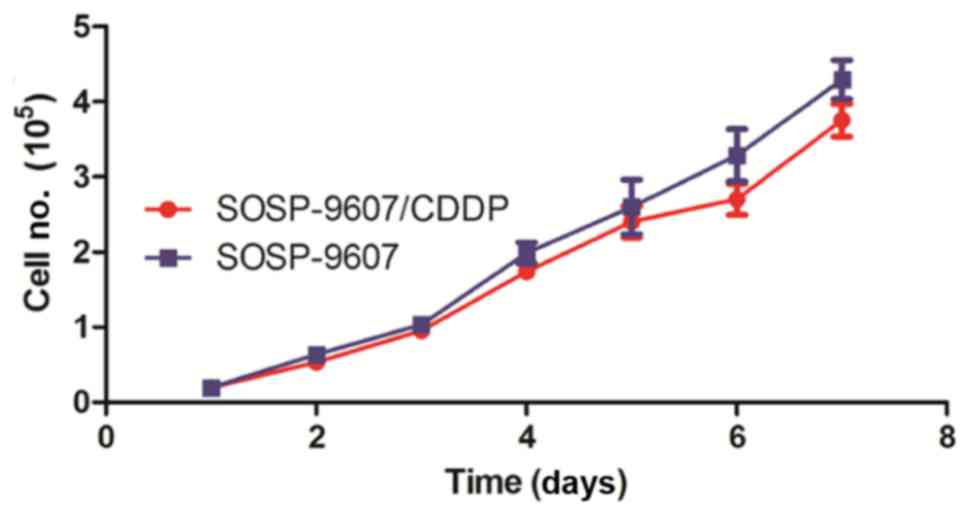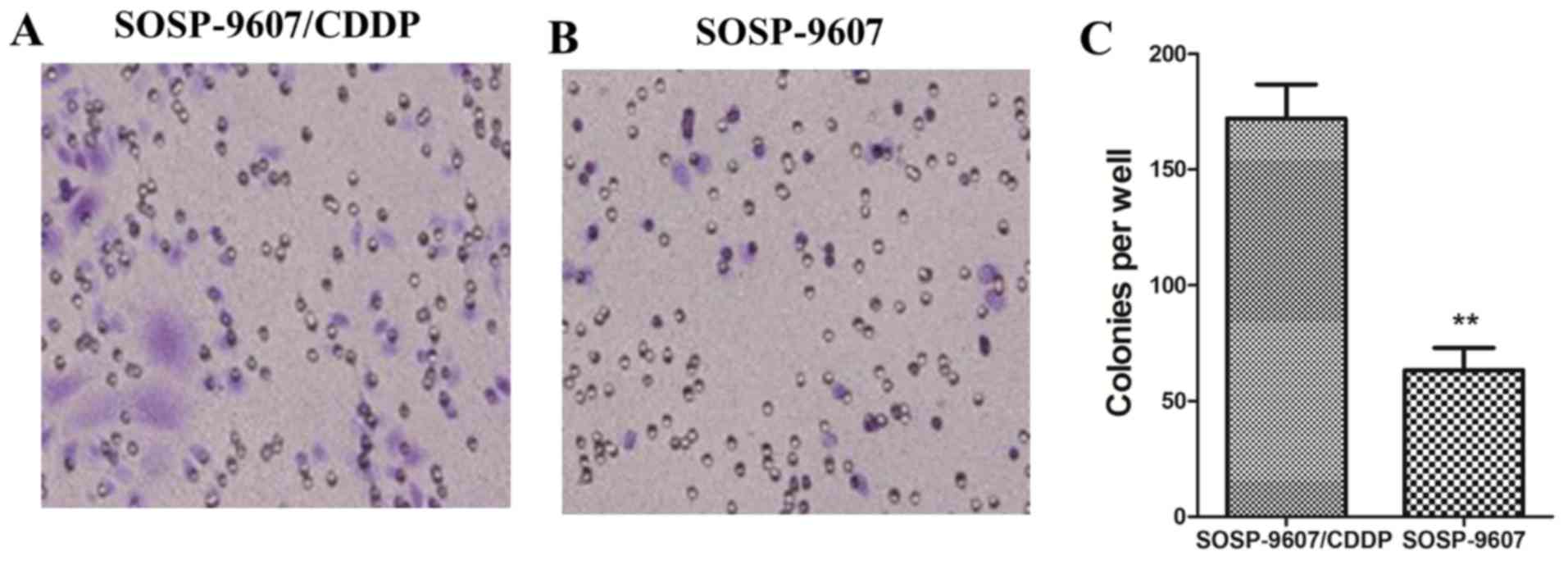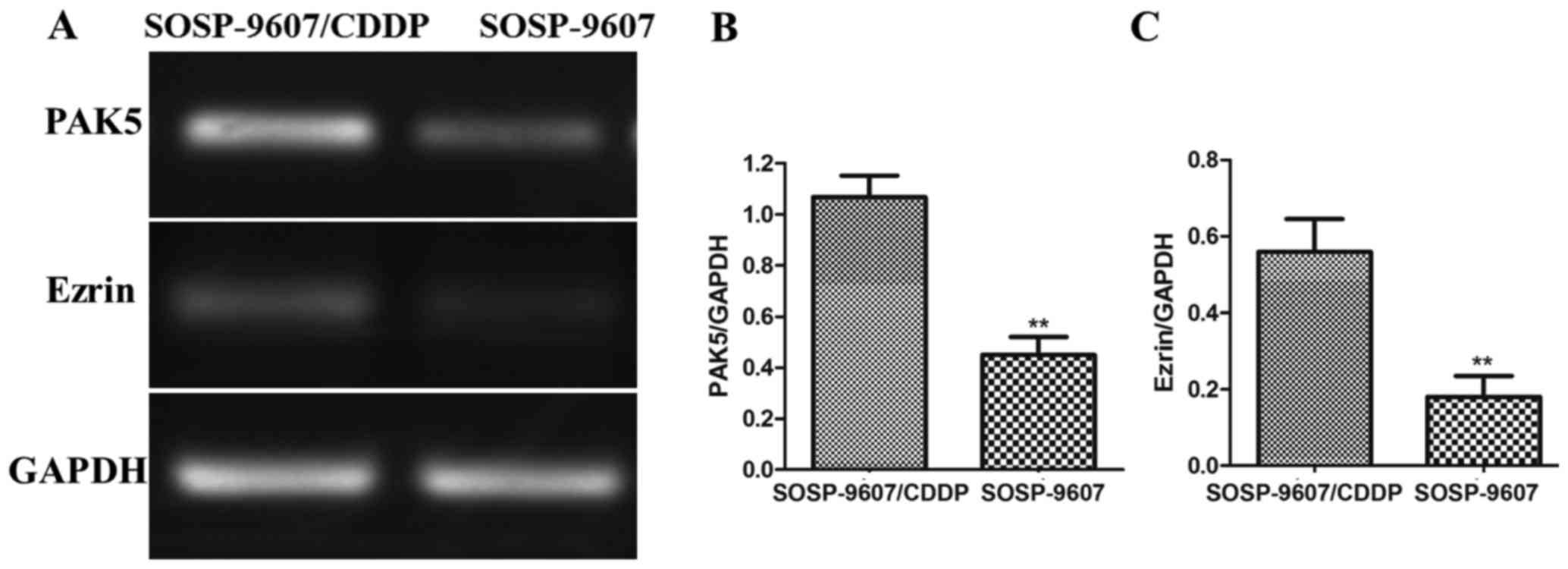Correlation between chemotherapy resistance in osteosarcoma patients and PAK5 and Ezrin gene expression
- Authors:
- Published online on: November 6, 2017 https://doi.org/10.3892/ol.2017.7355
- Pages: 879-884
-
Copyright: © Liu et al. This is an open access article distributed under the terms of Creative Commons Attribution License.
Metrics: Total
Views: 0 (Spandidos Publications: | PMC Statistics: )
Total PDF Downloads: 0 (Spandidos Publications: | PMC Statistics: )
Abstract
The correlation between PAK5 (P21-activated kinase 5) and Ezrin gene expression and chemotherapy resistance of osteosarcoma patients was investigated. The cisplatin (CDDP)-resistance model of osteosarcoma cells SOSP-9607/CDDP was established to detect the cell growth curve. Methyl thiazolyl tetrazolium (MTT) assay was used to detect the drug resistance of cells to chemotherapy drugs. Transwell assay was used to detect the invasive capacity of cells. Semi-quantitative PCR (qPCR) was used to detect the mRNA expression levels in the drug resistance-related genes PAK5 and Ezrin. Western blot analysis was used to detect the protein expression levels in PAK5 and Ezrin. Tumor tissues were taken from the osteosarcoma patients with chemotherapy resistance to detect the expression levels of PAK5 and Ezrin via immunohistochemical detection, and the correlation between PAK5 and Ezrin expressions was studied. The results of MTT assay showed that the growth rate of SOSP-9607 was similar to that of SOSP-9607/CDDP, and the difference was not statistically significant (P>0.05). The sensitivity of SOSP-9607 to CDDP was significantly higher than that of SOSP-9607/CDDP, and the difference was statistically significant (P<0.01). Transwell assay showed that the migration capacity of SOSP‑9607/CDDP was significantly better than that of SOSP-9607 (P<0.01), indicating that the drug resistance cell lines of osteosarcoma were constructed successfully. Semi-qPCR and western blot analysis showed that the protein expression levels in PAK5 and Ezrin in SOSP-9607/CDDP were significantly higher than those in SOSP-9607 (P<0.01). The results of immunohistochemistry showed that the expression quantities of PAK5 and Ezrin in osteosarcoma tissues were significantly higher than those in para-tumor tissues (P<0.01). Pearson's correlation analysis showed that expression of PAK5 and Ezrin was positively correlated (r=0.197, P=0.023). The osteosarcoma resistance is closely related to the expression levels of PAK5 and Ezrin genes. Thus, PAK5 and Ezrin genes may affect the tolerance of osteosarcoma patients to chemotherapy drugs during treatment via the synergistic effect.















